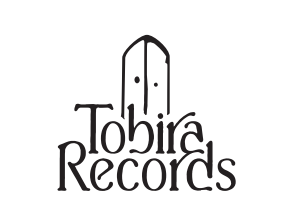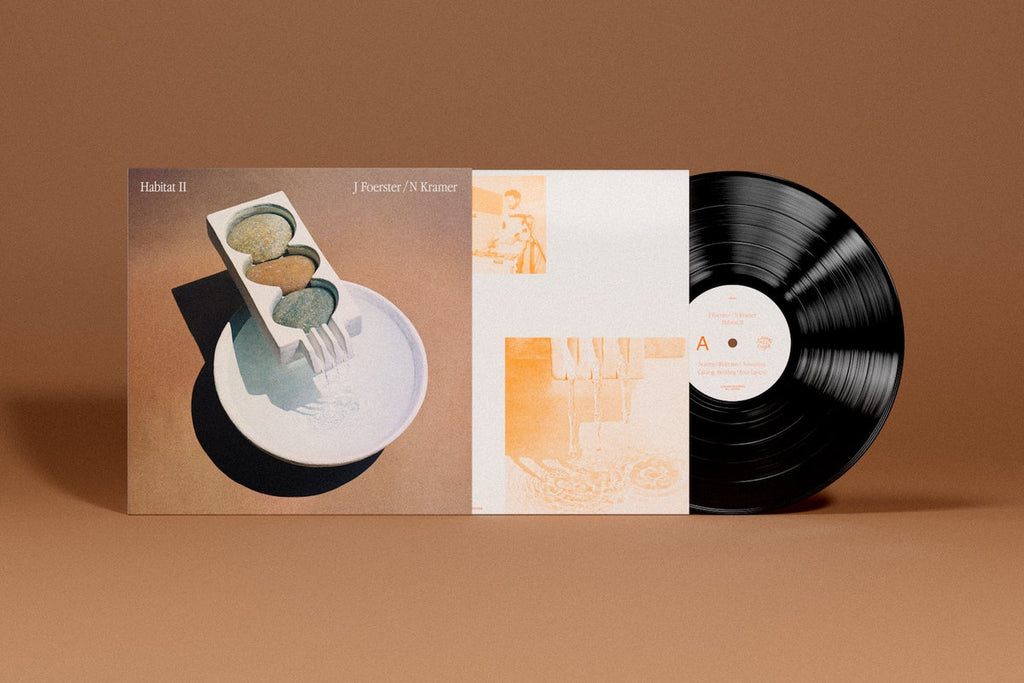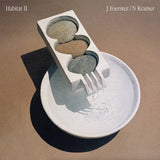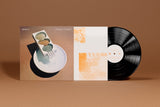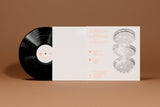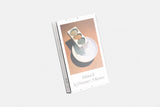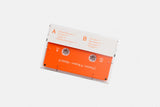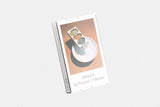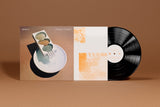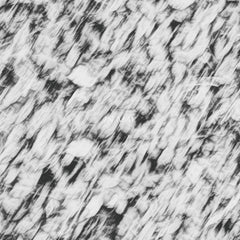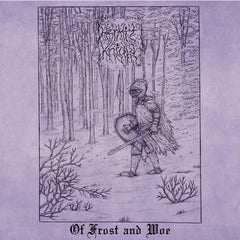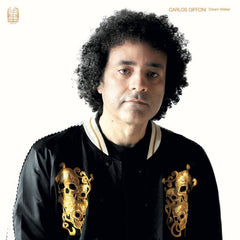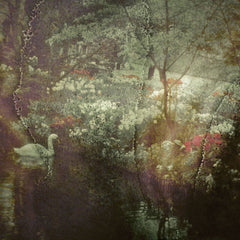J Foerster / N Kramer // Habitat II LP / TAPE
- Availability:
This is a collaborative album by ambient artists J Foerster and N Kramer from Berlin, Germany, released from Leaving Records in LA, USA in October 2023.
Contains 8 post-new age ambient jazz songs.
*If you would like a digital sound source, please feel free to contact us.
Below is a commentary by the label.
"Habitat (now more appropriately called Habitat I) is a conscientious and exploratory work by two Berlin-based experimental musicians, composer N Kramer and percussionist J Foerster. Inspired by Italian architect Ettore Sottsass, Habitat is clearly a product of COVID-era collaboration (albeit in the footsteps of ambient classics such as Music For Airports and Plantasia). ) It has a simple and appealing concept, with each track representing a room in an imaginary building. Tracks like ``Curved Corridor'' literally lead the listener into a psychogeographic labyrinth.
“Habitat II' is based on a similar premise.but,"If Habitat I depicted the mysterious complexity of an imaginary self-contained structure, Habitat II” expands the scope of the concept.Imagine not just the rooms of your virtual home, but the winding hallways and grounds of a mid-century building.How can we imagine these characteristics, map them, and make them appealing to listeners?It’s fitting to start with “Seating (Welcome),” a lingering, ethereal suite of silence, wind instruments, and percussive depth that gently hypnotizes us and beckons us in in the vein of Terry Riley. right.The clarity here, the direction of the air flow, is reminiscent of the Bauhaus style's dignity and simplicity of gesture.
Of particular note is Lily Clarke's sculptural ``Wasserspiel'' (track 7) - ``water fixture'' - which adorns the record jacket.On this album, Wasserspiel constitutes a particularly imitative highlight.Cascading, shimmering, sparkling fonts that (for their strength) don't rely on running water samples or found sounds.Instead, we are left with the distinct impression of the shimmer of flowing liquid and the associated refracted evening sunlight.Indeed, fountains (Wasserspiele's most common and domesticated form) are as rich as they are kitschy, emblematic of the 60s home-shopping catalog-like cultured aesthetic that underlies the Habitat series. Maybe it is.These Habitats, no matter where they are or what they look like (and are, in fact, open to interpretation), are vaguely utopian and heart-wrenchingly nostalgic. I'm sure you can agree.
Regarding their songwriting process, Kramer and Foerster cite a mutual interest in improvisation, as well as a kind of "first-best-thought" approach to recording and indexing ideas.Relying primarily on a sampler with a 15-second limit, their process emphasizes the organic layering of asynchronous (but importantly harmonious, perhaps even "hospitable") loops.Many rooms fell victim to the vagaries of the recording process and disappeared into the ether.“Habitat II'The rooms left behind have been cleared, furnished, and decorated.And we look forward to your arrival. "
Labels and other worksplease use this form. ///Click here to see more Leaving Records / Stones Throw releases available at Tobira.
------------------------
Ask us for digital files. Available as 12" black vinyl or cassette.
Tracklist:
1. Seating (Welcome) 05:05
2. Souvenirs 05:03
3. Catalog 03:28
4. Bedding (Four Layers) 05:56
5. New Sway 05:22
6. Blue Terrace 05:37
7. Wasserspiel 05:17
8. Windspiel 03:18
Leaving Records:
"Habitat (what we might now properly refer to as Habitat I) arrived, fully-formed, in 2021—the product of a conscientious, exploratory, and decidedly Covid-era collaboration between two Berlin-based experimental musicians: the composer N. (Niklas ) Kramer, and percussionist, J. (Joda) Foerster. Inspired by the Italian architect, Ettore Sottsass, Habitat's simple, yet beguiling conceit (following in the footsteps of canonical ambient releases like Music for Airports and Plantasia) was that each track ought to represent a room in an imagined building. Taken quite literally, tracks like “Curved Hallway” guided the listener through a kind of psychogeographic labyrinth, at once welcoming and slightly uncanny.
Habitat II operates on a similar premise. But if Habitat I charted the perplexing intricacies of an imagined, self-contained structure, Habitat II expands the conceptual realm. Think now, not only of rooms in a hypothetical home, but of the winding hallways and grounds of a mid-century structure—perhaps slightly past its prime, but not at all an inappropriate venue for a late-night soiree. How might these features be imagined, mapped, and rendered enticing for a listener? We begin, appropriately, with “Seating (Welcome),” which, in its fluttering, aetherial suite of static, winds, and percussive depths, gently hypnotizes in the vein of Terry Riley, beckoning our entry. The clarity here, the directional flow of air, recalls the dignity and gestural simplicity of the Bauhaus school.
Of significant note is the Wasserspiel (track seven)—”water fixture” (loosely translated), like the sculpture by Lily Clark, which graces the record's cover. In an album grounded by analogies, Wasserspiel constitutes an especially mimetic highlight: a cascading, shimmering, font of radiance that does not (to its strength) rely upon a sample or found-sound reference to running water. Instead we are left with the distinct impression of the glimmer of flowing liquid, and of the attendant, refractory evening sunlight. Indeed, fountains (the most common and domesticated form of Wasserspiele)—their simultaneous kitsch and abundance—may very well epitomize the kind of cultivated, sixties home-shopping catalog aesthetic that undergirds the Habitat series. These habitats, wherever they are, however they appear to you (and there is indeed ample room for interpretation)—we can all certainly agree that they are vaguely utopian and achingly nostalgic.
Of their compositional process, Kramer and Foerster reference their mutual interest in improvisation, and, furthermore, a kind of “first thought best thought” approach to recording and indexing ideas. Relying primarily on a sampler with a 15 second limit, their process emphasizes the organic layering of asynchronous (though, crucially, harmonious — perhaps even “hospitable”) loops. Suffice it to say, many rooms have been lost to the aether, casualties of a mercurial recording process. Those rooms that remain in Habitat II have been cultivated , furnished, and decorated. And they eagerly await your entry. "
Artist: J Foerster / N Krame
Label: Leaving Records
This is a collaborative album by ambient artists J Foerster and N Kramer from Berlin, Germany, released from Leaving Records in LA, USA in October 2023.
Contains 8 post-new age ambient jazz songs.
*If you would like a digital sound source, please feel free to contact us.
Below is a commentary by the label.
"Habitat (now more appropriately called Habitat I) is a conscientious and exploratory work by two Berlin-based experimental musicians, composer N Kramer and percussionist J Foerster. Inspired by Italian architect Ettore Sottsass, Habitat is clearly a product of COVID-era collaboration (albeit in the footsteps of ambient classics such as Music For Airports and Plantasia). ) It has a simple and appealing concept, with each track representing a room in an imaginary building. Tracks like ``Curved Corridor'' literally lead the listener into a psychogeographic labyrinth.
“Habitat II' is based on a similar premise.but,"If Habitat I depicted the mysterious complexity of an imaginary self-contained structure, Habitat II” expands the scope of the concept.Imagine not just the rooms of your virtual home, but the winding hallways and grounds of a mid-century building.How can we imagine these characteristics, map them, and make them appealing to listeners?It’s fitting to start with “Seating (Welcome),” a lingering, ethereal suite of silence, wind instruments, and percussive depth that gently hypnotizes us and beckons us in in the vein of Terry Riley. right.The clarity here, the direction of the air flow, is reminiscent of the Bauhaus style's dignity and simplicity of gesture.
Of particular note is Lily Clarke's sculptural ``Wasserspiel'' (track 7) - ``water fixture'' - which adorns the record jacket.On this album, Wasserspiel constitutes a particularly imitative highlight.Cascading, shimmering, sparkling fonts that (for their strength) don't rely on running water samples or found sounds.Instead, we are left with the distinct impression of the shimmer of flowing liquid and the associated refracted evening sunlight.Indeed, fountains (Wasserspiele's most common and domesticated form) are as rich as they are kitschy, emblematic of the 60s home-shopping catalog-like cultured aesthetic that underlies the Habitat series. Maybe it is.These Habitats, no matter where they are or what they look like (and are, in fact, open to interpretation), are vaguely utopian and heart-wrenchingly nostalgic. I'm sure you can agree.
Regarding their songwriting process, Kramer and Foerster cite a mutual interest in improvisation, as well as a kind of "first-best-thought" approach to recording and indexing ideas.Relying primarily on a sampler with a 15-second limit, their process emphasizes the organic layering of asynchronous (but importantly harmonious, perhaps even "hospitable") loops.Many rooms fell victim to the vagaries of the recording process and disappeared into the ether.“Habitat II'The rooms left behind have been cleared, furnished, and decorated.And we look forward to your arrival. "
Labels and other worksplease use this form. ///Click here to see more Leaving Records / Stones Throw releases available at Tobira.
------------------------
Ask us for digital files. Available as 12" black vinyl or cassette.
Tracklist:
1. Seating (Welcome) 05:05
2. Souvenirs 05:03
3. Catalog 03:28
4. Bedding (Four Layers) 05:56
5. New Sway 05:22
6. Blue Terrace 05:37
7. Wasserspiel 05:17
8. Windspiel 03:18
Leaving Records:
"Habitat (what we might now properly refer to as Habitat I) arrived, fully-formed, in 2021—the product of a conscientious, exploratory, and decidedly Covid-era collaboration between two Berlin-based experimental musicians: the composer N. (Niklas ) Kramer, and percussionist, J. (Joda) Foerster. Inspired by the Italian architect, Ettore Sottsass, Habitat's simple, yet beguiling conceit (following in the footsteps of canonical ambient releases like Music for Airports and Plantasia) was that each track ought to represent a room in an imagined building. Taken quite literally, tracks like “Curved Hallway” guided the listener through a kind of psychogeographic labyrinth, at once welcoming and slightly uncanny.
Habitat II operates on a similar premise. But if Habitat I charted the perplexing intricacies of an imagined, self-contained structure, Habitat II expands the conceptual realm. Think now, not only of rooms in a hypothetical home, but of the winding hallways and grounds of a mid-century structure—perhaps slightly past its prime, but not at all an inappropriate venue for a late-night soiree. How might these features be imagined, mapped, and rendered enticing for a listener? We begin, appropriately, with “Seating (Welcome),” which, in its fluttering, aetherial suite of static, winds, and percussive depths, gently hypnotizes in the vein of Terry Riley, beckoning our entry. The clarity here, the directional flow of air, recalls the dignity and gestural simplicity of the Bauhaus school.
Of significant note is the Wasserspiel (track seven)—”water fixture” (loosely translated), like the sculpture by Lily Clark, which graces the record's cover. In an album grounded by analogies, Wasserspiel constitutes an especially mimetic highlight: a cascading, shimmering, font of radiance that does not (to its strength) rely upon a sample or found-sound reference to running water. Instead we are left with the distinct impression of the glimmer of flowing liquid, and of the attendant, refractory evening sunlight. Indeed, fountains (the most common and domesticated form of Wasserspiele)—their simultaneous kitsch and abundance—may very well epitomize the kind of cultivated, sixties home-shopping catalog aesthetic that undergirds the Habitat series. These habitats, wherever they are, however they appear to you (and there is indeed ample room for interpretation)—we can all certainly agree that they are vaguely utopian and achingly nostalgic.
Of their compositional process, Kramer and Foerster reference their mutual interest in improvisation, and, furthermore, a kind of “first thought best thought” approach to recording and indexing ideas. Relying primarily on a sampler with a 15 second limit, their process emphasizes the organic layering of asynchronous (though, crucially, harmonious — perhaps even “hospitable”) loops. Suffice it to say, many rooms have been lost to the aether, casualties of a mercurial recording process. Those rooms that remain in Habitat II have been cultivated , furnished, and decorated. And they eagerly await your entry. "
Artist: J Foerster / N Krame
Label: Leaving Records
